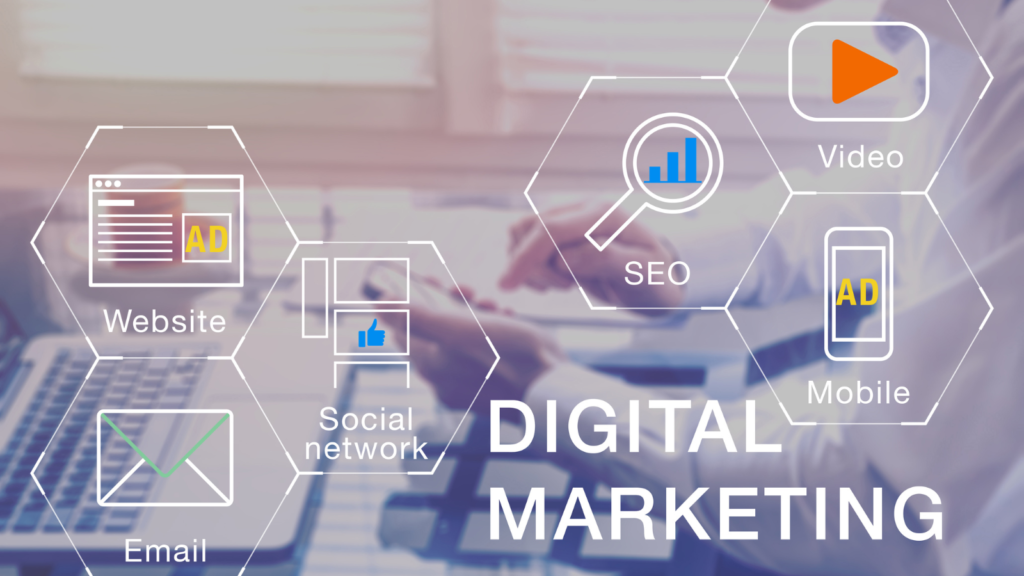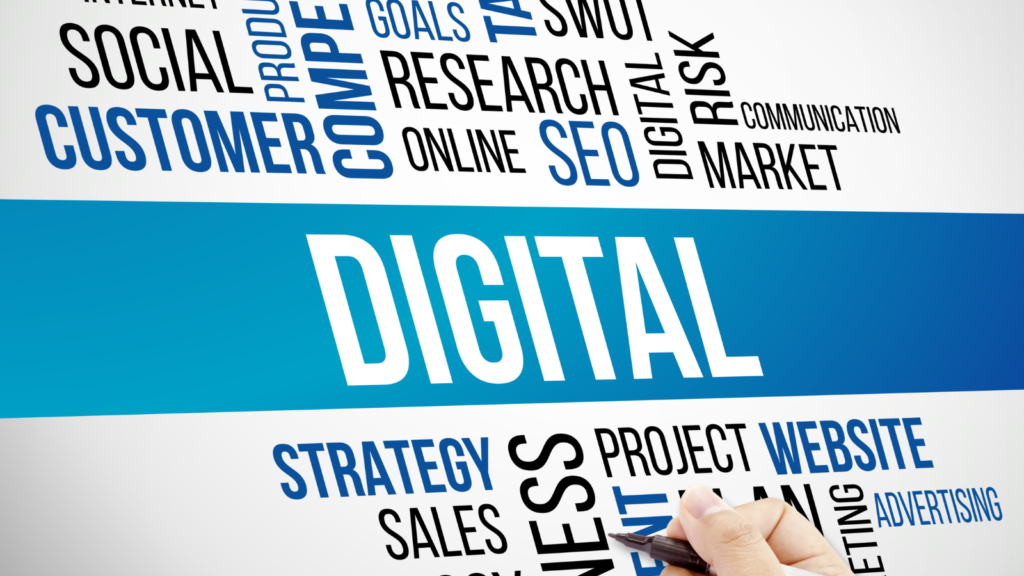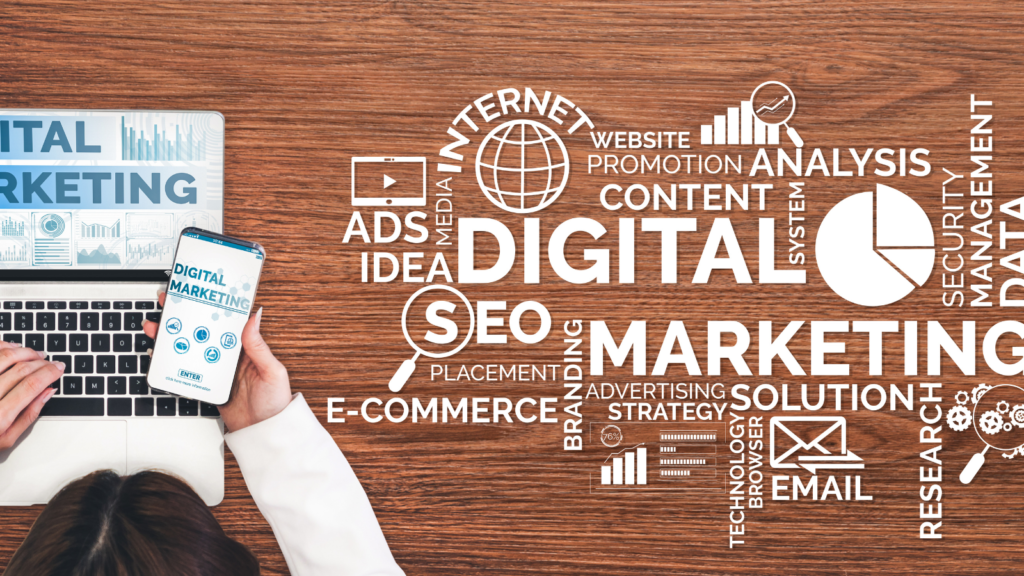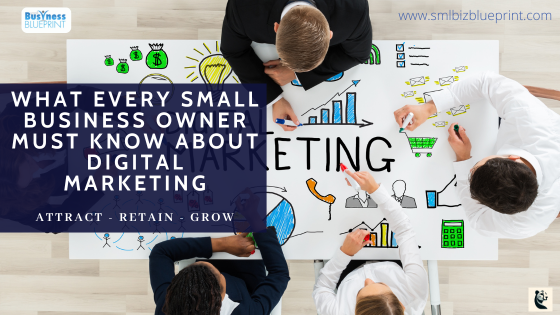In today’s digital age, having a robust online presence is not just advantageous—it’s essential for any small business aiming to thrive.
However, simply being online isn’t enough. To truly unlock growth and maximise your business’s potential, it’s crucial to implement effective digital marketing strategies that drive conversions.
Did you know that nearly 64% of small businesses use digital marketing to reach their customers, yet many struggle to achieve significant conversion rates?
This highlights a pressing need for targeted strategies that attract and convert.
This comprehensive guide will delve into the most effective digital marketing strategies tailored specifically for small businesses.
From choosing the right digital channels and leveraging content marketing to enhance engagement to optimising your SEO approach and harnessing social media’s power, each section of this post will equip you with actionable insights to boost your conversion rates and foster sustainable growth.
Whether you’re looking to refine your existing digital marketing plan or starting from scratch, these insights will pave the way for a more profitable marketing journey.

#1 Identifying Your Ideal Digital Channels: Where to Focus Your Efforts
When venturing into the vast world of digital marketing, it’s crucial for small businesses to pinpoint which channels will most effectively reach their target audience and foster genuine engagement.
Investing time and resources into the right platforms can dramatically enhance your visibility and increase conversion rates.
Understand Your Audience
Before selecting a channel, you need a deep understanding of your customer base.
Who are they?
What are their online behaviours?
Which platforms do they frequent?
Tools like Google Analytics provide invaluable insights into your audience’s demographics, behaviours, and preferences.
Analysing this data helps you decide where to focus your marketing efforts.
Evaluate Channel Suitability
Each digital channel offers unique advantages depending on your business goals and audience. For instance:
- Social Media Platforms: Ideal for businesses whose products or services are visually appealing, such as fashion, home decor, or food services. Instagram and Pinterest are perfect for high-quality images and stories, while Twitter is excellent for quick updates and direct customer interactions.
Email Marketing: Best for businesses that have recurring transactions and updates, allowing you to keep your customers informed and engaged regularly.
Content Marketing (Blogs, Articles): Suitable for businesses that benefit from providing customers with educational content, helping to build trust and authority in your industry.
Tailor Your Strategy
Once you’ve identified the most relevant channels, tailor your strategy to fit each platform’s unique environment.
This might involve creating engaging and shareable content for social media that encourages interaction. Email marketing could mean developing personalised newsletters that speak directly to the reader’s interests and needs.
Monitor and Adapt
Digital marketing is not a set-and-forget strategy. You must continuously monitor your performance across different channels to determine what works and what doesn’t.
Use tools like A/B testing to experiment with different messages and formats to see which resonates most with your audience.
Adapting your strategy based on these insights will help you optimise your efforts and increase your return on investment.
Small businesses can create more targeted, effective marketing campaigns that increase engagement and conversion rates by strategically selecting and focusing on the right digital channels.
Remember, the key is not to be everywhere but to be where your customers are.
#2 Leveraging Content Marketing for Enhanced Engagement and Conversions
Content marketing is more than just a buzzword; it’s a pivotal strategy in digital marketing that focuses on creating and distributing valuable, relevant, and consistent content to attract and retain a clearly defined audience and ultimately drive profitable customer action.
This can translate to increased brand loyalty and higher conversion rates for small businesses.
Create Content That Resonates
Your content should speak directly to the interests and needs of your target audience. Start by identifying your customers’ problems and questions and crafting content to provide solutions and answers.
Whether it’s blog posts, videos, infographics, or podcasts, the key is relevance and value.
For instance, a small business selling eco-friendly products might create blog posts on “10 Easy Ways to Make Your Home More Sustainable” or produce instructional videos on using their products in daily life.
Diversify Your Content Formats
Different content formats cater to various audience preferences, helping you to broaden your reach and engagement levels. Incorporate a mix of text, images, and videos across your platforms.
Videos, for instance, can significantly boost dwell times on your site and are highly shareable on social media, increasing your brand’s visibility.
Optimise Content for SEO
To ensure that your content is discoverable, optimise it for search engines:
Use relevant keywords naturally throughout your articles.
Include meta descriptions, title tags, and alt-text for images incorporating keywords.
Structure your content with clear headings (using H1, H2, and H3 tags) to improve readability and SEO.
Use Content to Build Trust
Content marketing isn’t just about promoting products; it’s about establishing your brand as a trustworthy and knowledgeable leader in your industry. Offer free, valuable information that can help your customers even if they don’t make a purchase immediately.
This builds trust, which is crucial for long-term customer relationships and conversions.
Engage with Your Audience
Use your content as a tool to engage directly with your audience. Encourage comments on your blog posts, ask questions in your videos, and engage with users who interact with your content on social media.
This not only improves engagement but also provides you with insights into your audience’s preferences and needs.
Measure and Refine
Use analytics tools to track your content’s performance regularly. Look at metrics like page views, shares, comments, and time spent on the page.
Use this data to refine your strategy, focusing on the types of content that generate the best results.
Content marketing offers small businesses a dynamic platform to assert their authority, connect with customers, and drive conversions by delivering meaningful, engaging content tailored to their audience’s interests and needs.
#3 Maximizing Social Media Impact: Strategies for Small Businesses
Social media is an indispensable tool for small businesses aiming to boost their online presence and conversion rates. With billions of users globally, platforms like Facebook, Instagram, Twitter, and LinkedIn offer vast opportunities for brands to connect with potential customers.
However, effectively harnessing these platforms requires strategic planning and engagement.
Choose the Right Platforms
Not all social media platforms are suitable for every business. Select platforms that best align with your business’s nature and where your target audience is most active.
For example, visual products like clothing or home decor thrive on Instagram and Pinterest, while B2B services may find more traction on LinkedIn.
Create Engaging Content
Social media thrives on engagement. Create content that encourages interaction, such as:
- Polls and surveys to engage users and gather feedback.
- Live videos to connect in real-time, offering Q&A sessions, behind-the-scenes looks, or product demonstrations.
- Contests and giveaways to encourage participation and spread word-of-mouth.
Personalise the Experience
Leverage social media tools to personalise user experiences. Use targeted ads to reach specific demographics and engage directly with users through comments and messages to create a more personalised connection.
Consistency is Key
Maintaining a consistent posting schedule helps keep your audience engaged and informed.
Use social media management tools like Buffer or Hootsuite to schedule posts across different platforms to ensure consistent communication.
Utilise Social Proof
Social proof, such as customer testimonials, user-generated content, and reviews, can significantly enhance trust and credibility.
Share these elements on your social media to positively influence potential customers.
Track and Optimize
Track metrics such as engagement rates, click-through rates, and conversion rates to measure the effectiveness of your social media strategies.
Use this data to refine your approach, experimenting with different types of content and posting schedules to find what works best.
By strategically leveraging social media, small businesses can create a dynamic and engaging online presence that attracts more followers and converts them into loyal customers.
This approach ensures that your brand remains relevant and visible in the ever-evolving digital landscape.

#4 Email Marketing: A Powerful Tool for Driving Repeat Business
Email marketing remains one of small businesses’ most effective digital marketing strategies, particularly for driving conversions and building long-term customer relationships.
It offers direct communication to your audience and can be highly personalised to increase relevance and engagement.
Build a Strong Subscriber List
Start by building a robust email list. Encourage visitors to your website or social media platforms to sign up by offering incentives like discounts, free guides, or exclusive updates.
Ensure compliance with regulations like GDPR or CAN-SPAM by making your sign-up process transparent and including an easy opt-out option.
Segment Your Audience
Segmentation is key to effective email marketing. Divide your list using relevant criteria such as purchase history, location, or behaviour. This allows you to tailor your messages more precisely, improving engagement and conversion rates.
For example, send a special offer on garden tools to customers who have previously purchased gardening equipment.
Craft Engaging Content
Your email content should be engaging and provide value to the recipient. Include compelling subject lines to increase open rates, and ensure the body of the email is concise and to the point.
Use attractive visuals and a clear call to action, like “Shop Now” or “Learn More,” to guide recipients toward your desired action.
Personalise Your Emails
Personalisation can significantly enhance the effectiveness of your email campaigns. Use the recipient’s name in the email, reference their past interactions with your brand, and recommend products or services that align with their interests.
Personalised emails have been shown to deliver 6x higher transaction rates.
Optimise for Mobile
With the majority of emails now being opened on mobile devices, it’s crucial that your emails are mobile-friendly. Use responsive design templates, test different devices, and keep your email content brief and easily scrollable.
Buttons and links should be easy to tap, and the overall layout should be clean and uncluttered.
Analyse and Adapt
Continuously measure the performance of your email campaigns. Track open rates, click-through rates, conversion rates, and ROI.
Use A/B testing to test different subject lines and content formats, and send times to see what works best for your audience.
This data will help you refine your strategy and improve the effectiveness of future campaigns.
When executed with attention to detail and focused on personalisation and engagement, email marketing can be a powerful tool for small businesses to drive repeat business and strengthen customer relationships.
#5 Optimizing for Mobile: Why Your Small Business Can’t Afford to Ignore It
In the current digital landscape, mobile optimisation is not just an option; it’s a necessity.
With over half of all internet traffic coming from mobile devices, small businesses must ensure their digital marketing strategies are optimised for mobile to enhance user experience and increase conversion rates.
Importance of Mobile-Friendly Design
A mobile-friendly design ensures that your website and its content look good and function well on mobile devices. This is crucial because a poor mobile experience can quickly drive potential customers away.
In fact, 57% of users say they won’t recommend a business with a poorly designed mobile site.
Responsive Website Design
Ensure that your website uses a responsive design, automatically adjusting content layouts based on the device being used.
This means your website will be easily navigable, whether it’s being viewed on a desktop, tablet, or smartphone.
Responsive design improves user experience and improves SEO rankings as Google prioritises mobile-friendly sites.
Mobile-First Content
When creating content, think mobile-first. This means designing your content to be consumed easily on a small screen. Keep paragraphs short, use large, readable fonts, and ensure that interactive elements like buttons or links are easy to tap with a finger.
Simplify menus and keep the overall design uncluttered.
Accelerated Mobile Pages (AMP)
Consider implementing Accelerated Mobile Pages (AMP). AMP is a project from Google and Twitter designed to make really fast mobile pages.
By using AMP, you can create lightweight versions of your web pages that load quickly on mobile devices, enhancing user experience and potentially boosting your search engine rankings.
Optimise for Local Search
Local SEO is particularly important for small businesses. Ensure your business is listed in online directories and has consistent NAP (name, address, phone number) information across all platforms.
Use local keywords in your content and metadata to increase visibility in local search results, which are often performed on mobile devices.
Monitor Mobile Analytics
Use Google Analytics or other tools to monitor your site’s performance on mobile devices.
Look at metrics like mobile traffic, bounce rate, and conversion rates. This data will help you understand how well your mobile site is performing and where improvements are needed.
By prioritising mobile optimisation in your digital marketing strategy, you can ensure that your small business is equipped to meet the demands of today’s mobile-centric consumer. This will increase engagement, better customer retention, and higher conversion rates.
#6 Utilizing SEO to Attract More Leads: Practical Tips for Small Businesses
Search Engine Optimization (SEO) is a fundamental component of digital marketing that no small business can afford to overlook.
By enhancing your website’s visibility in search engine results, SEO helps you attract more organic traffic, which can lead to increased leads and conversions.
Here are some practical SEO tips tailored for small businesses aiming to improve their online presence.
Focus on Keyword Research
Start by identifying the keywords and phrases that potential customers use to search for products or services like yours. Use tools like Google Keyword Planner or SEMrush to find relevant keywords with good search volume but lower competition.
Incorporate these keywords naturally into your website’s content, titles, meta descriptions, and URLs.
Optimise Website Structure
A well-structured website helps search engines understand your content and index your pages more effectively.
Ensure your website has a logical hierarchy, uses clear navigation, and includes sitemaps both for users and search engines.
Each page should have a clear focus, and internal linking should be used to guide users and search engines to related content.
Produce High-Quality Content
Content is king in the world of SEO. Produce high-quality, relevant content that addresses the needs and questions of your target audience. Regularly update your blog with fresh content to keep users returning and signal to search engines that your website is active.
Engaging content can also earn you backlinks from other websites, which are highly beneficial for SEO.
Optimise for Local SEO
Local SEO is crucial for small businesses. Optimise your website for local search queries by including your location in your keywords, such as “florist in Sydney” or “Sydney coffee shop.”
Ensure your business is listed with accurate and consistent contact information in local directories and on Google My Business.
Improve Page Load Speed
Page speed is a significant factor in user experience and SEO rankings. Use tools like Google PageSpeed Insights to test your website’s speed and follow the recommendations to improve.
Optimising images, leveraging browser caching, and minimising CSS and JavaScript can all help reduce load times.
Mobile Optimization
Given the prevalence of mobile searches, having a mobile-friendly website is essential for SEO. Ensure your website is responsive, meaning it automatically adjusts to fit the screen of any device, providing an optimal browsing experience for all users.
Monitor Your SEO Performance
Use tools like Google Analytics and Google Search Console to track your website’s performance. Monitor your rankings, the amount of organic traffic, and your site’s overall health.
Use these insights to refine your SEO strategies and fix any issues.
By applying these SEO best practices, small businesses can enhance their online visibility, attract more targeted traffic, and drive more conversions.
Remember, SEO is an ongoing process, and staying updated with the latest trends and algorithm updates is key to maintaining and improving your search engine rankings.

#7 Measuring Success: How to Track Your Digital Marketing ROI
Understanding the return on investment (ROI) from your digital marketing efforts is crucial for any small business.
It helps you identify which strategies are working and where to improve, ensuring that you invest your budget effectively. Here’s how you can measure and enhance your digital marketing ROI.
Set Clear Objectives and Key Performance Indicators (KPIs)
Begin by defining clear, measurable objectives for your digital marketing campaigns. These could be increasing website traffic, boosting conversion rates, or growing your email subscriber list.
Corresponding KPIs include the number of new visitors to your website, the percentage of conversions from a specific campaign, or the number of sign-ups received during a promotional period.
Implement Tracking Tools
Use digital analytics tools to track your progress. Google Analytics monitors website traffic, user behaviour, and conversion metrics.
For social media analytics, platforms like Facebook Insights and Twitter Analytics can provide valuable data on engagement rates and audience growth.
Analyse Customer Acquisition Cost (CAC)
Calculate your Customer Acquisition Cost (CAC) by dividing the total costs (marketing expenses) spent on acquiring more customers by the number of customers acquired during the period the money was spent.
This metric is crucial for understanding the cost-effectiveness of your marketing strategies.
Measure Customer Lifetime Value (CLTV)
Understanding your customers’ Lifetime Value (LTV) is essential. LTV is the total revenue you expect from a single customer over the duration of their relationship with your business.
Comparing CLTV to CAC provides insight into the true profitability of your marketing efforts.
Conduct A/B Testing
A/B testing involves creating two versions of a marketing asset (such as a webpage or email) with one varying element (like a headline or call to action) to see which version performs better.
This method lets you optimise your digital marketing campaigns based on real data.
Regularly Review and Adjust
Digital marketing is dynamic, so reviewing your metrics and adapting your strategies regularly is important.
Analyse your data at least monthly to understand trends, identify what is working, and detect areas needing improvement.
By measuring your digital marketing ROI effectively, you can make informed decisions that save money and enhance your overall marketing effectiveness.
This ongoing process of measurement and optimisation is key to growing your small business in a digital world.
Conclusion
Throughout this guide, we’ve explored various digital marketing strategies that small businesses can use to unlock growth and boost conversions.
From identifying the right digital channels and creating engaging content to leveraging social media, optimising emails, ensuring mobile-friendliness, employing effective SEO tactics, and measuring your ROI, each strategy plays a crucial role in shaping a successful digital marketing plan.
Recap of Key Strategies:
- Identify Your Ideal Digital Channels: Focus on platforms where your target audience is most active and aligns with your business goals.
- Leverage Content Marketing: Produce valuable and relevant content to attract and retain customers, enhance engagement, and establish your authority.
- Maximise Social Media Impact: Engage actively with your audience through personalised content and interactive elements.
- Email Marketing as a Conversion Tool: Use targeted and personalised email campaigns to drive conversions and build customer loyalty.
- Optimise for Mobile Users: Ensure your digital presence is mobile-friendly to cater to growing users accessing content via mobile devices.
- Utilise SEO to Attract More Leads: Implement SEO best practices to increase your visibility and increase organic traffic.
- Measure Your Digital Marketing ROI: Regularly track and analyse your digital marketing efforts to optimise strategies and improve results.
Digital marketing is an ever-evolving field; staying updated with the latest trends and technologies is crucial.
To continue growing, consistently review your strategies, adapt to changes, and always aim to understand your audience’s needs more deeply.
Now is the time to take action! Use the insights and tips provided in this guide to evaluate your current digital marketing strategies.
Experiment with different tactics, measure the outcomes and continuously refine your approach to find what best suits your unique business needs.
If you’re interested in exploring digital marketing more deeply or need more personalised advice, consider subscribing to our newsletter. We’ll send you the latest tips and trends straight to your inbox.
Unlock the full potential of your small business with effective digital marketing strategies.
Take the first step today towards a more dynamic and successful digital presence that attracts customers and converts them into loyal brand advocates.
FAQs
Q1: What are the best digital marketing strategies for small businesses?
A1: The most effective strategies include SEO optimisation, content marketing, social media engagement, email marketing, and mobile optimisation. Each strategy increases visibility, engages customers, and drives conversions.
Q2: How can I choose the right digital marketing channels for my small business?
A2: Start by understanding where your target audience spends their time online. Analyse your current customer data and market trends. Tools like Google Analytics can help determine which channels yield the best engagement and conversion rates.
Q3: Why is content marketing important for small businesses?
A3: Content marketing helps establish your brand as an authority in your industry, builds trust with your audience, and improves your website’s SEO, which attracts more organic traffic and leads to higher conversions.
Q4: How can I use social media to improve my small business’s digital marketing?
A4: Utilize social media to create engaging content that promotes interaction, such as polls, live videos, and contests. Tailor your content to each platform to maximise reach and engagement. Regular interaction and personalised responses also enhance customer relationships.
Q5: What are some tips for optimising email marketing strategies?
A5: Segment your email list to send targeted, personalised messages. Use compelling subject lines to boost open rates and ensure your emails are mobile-friendly. Regularly analyse your email performance to refine your strategies.
Q6: Why is mobile optimisation crucial for digital marketing?
A6: With a significant portion of internet users accessing content via mobile devices, a mobile-optimized experience is essential for keeping users engaged and improving conversion rates. Ensure your website is responsive and that your content is easily navigable on a smartphone or tablet.
Q7: How do I measure the success of my digital marketing efforts?
A7: Set clear KPIs for your business goals, such as increased traffic, higher conversion rates, or improved customer retention. Use tools like Google Analytics to track these metrics, and regularly review your strategies to optimise performance.
Other Articles
Understanding Data: A Basic Guide for Small Business Owners
Why Small Businesses Can’t Afford to Ignore Lead Generation
Blueprint for Small Business Success: Jack Welch’s 10 Key Leadership Principles




